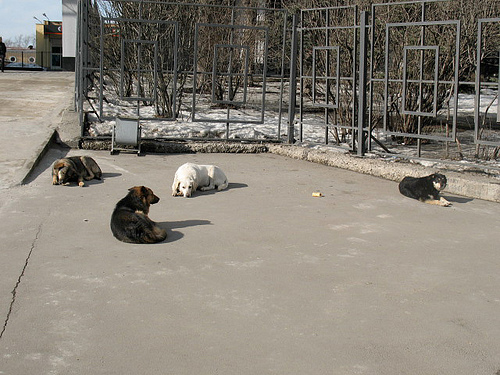By Griffy Vigneron (The Cascade) – Email
Print Edition: May 8, 2013
In the Russian city of Moscow, it is not unusual to share your morning commute with a stray canine.
These street-savvy mutts are often spotted waiting for a train in the city’s underground metro stations. Some have even been seen transferring from one train to the next to get to their destination, usually the bustling downtown core of Moscow. Researchers hypothesize the dogs figured out how to navigate the transit by smell.
Navigating the metro system is only one of a variety of intelligent behaviours that the dogs display. Strays will wait for crosswalk lights to turn in order to cross roads safely, even when no humans are present. Some dogs use their charm and cuddle up beside strangers with big hearts who can’t help but share their snacks. Other strays sneak up behind unsuspecting snackers and bark, startling them into dropping their food where the dog can gobble it up.
Moscow is home to approximately 26,000 strays, and about 500 of these dogs live in the city’s metro stations. Neuronov, a dog behaviour specialist in Moscow, told the Financial Times that these 500 or so “metro” dogs appear to exhibit the most intelligent behaviour.
So what is it precisely that makes these dogs so smart?
Andrei Poyarkov is a researcher at the A.N. Severtsov Institute of Ecology and Evolution who has studied Moscow’s Strays for the past 30 years. He noted to the Financial Times that he estimates only about three per cent of the stray dogs actually survive long enough to breed and pass on their genes. This implies the dogs that survive have to be extremely quick and intelligent in order to navigate the city. In turn, their offspring, having similar genes, should be equally as intelligent or more so, in order to out-do other dogs.
Poyarkov also told the Financial Times he noticed the dogs that survive appear to be “excellent psychologists … [t]he dog will come to a little old lady, start smiling and wagging his tail, and sure enough, he’ll get food.”
Unlike a regular domestic dog, the metro strays are not prone to attachments to humans. While they will be friendly, unless looking for a meal, they generally go out of the way to avoid humans and keep to themselves.
It appears that the dogs have evolved or adapted in accordance with the area in which they live, and by doing what they need to in order to survive in that environment – including taking the train.
In reality the dogs have more than surpassed simply surviving in their environment: they have practically become part of it. The strays are known to keep the streets clean and keep the rats at bay.
There is even a Russian site dedicated to the metro dogs, where people post pictures of the dogs commuting alongside regular human commuters. It can be accessed at metrodog.ru.


